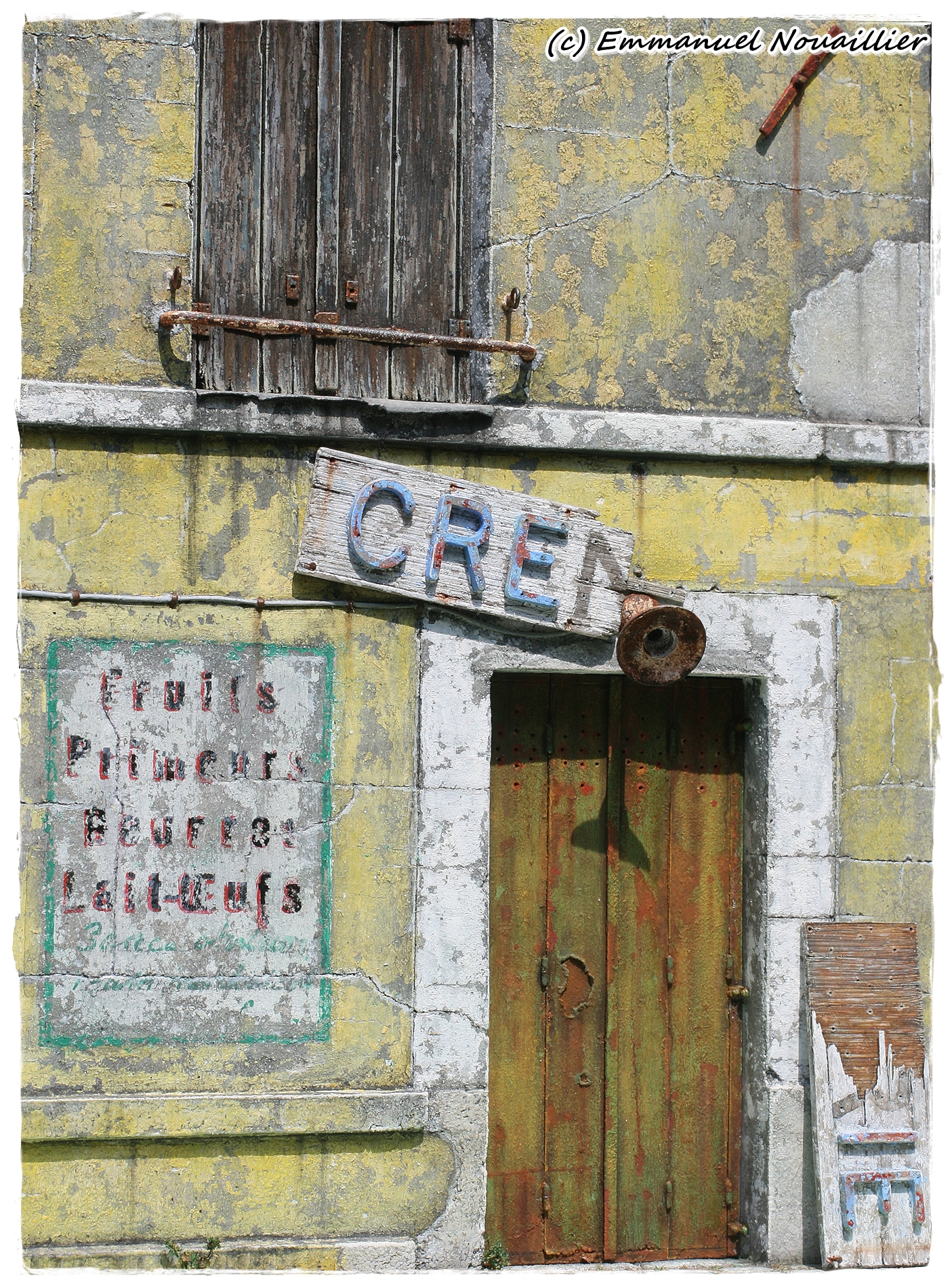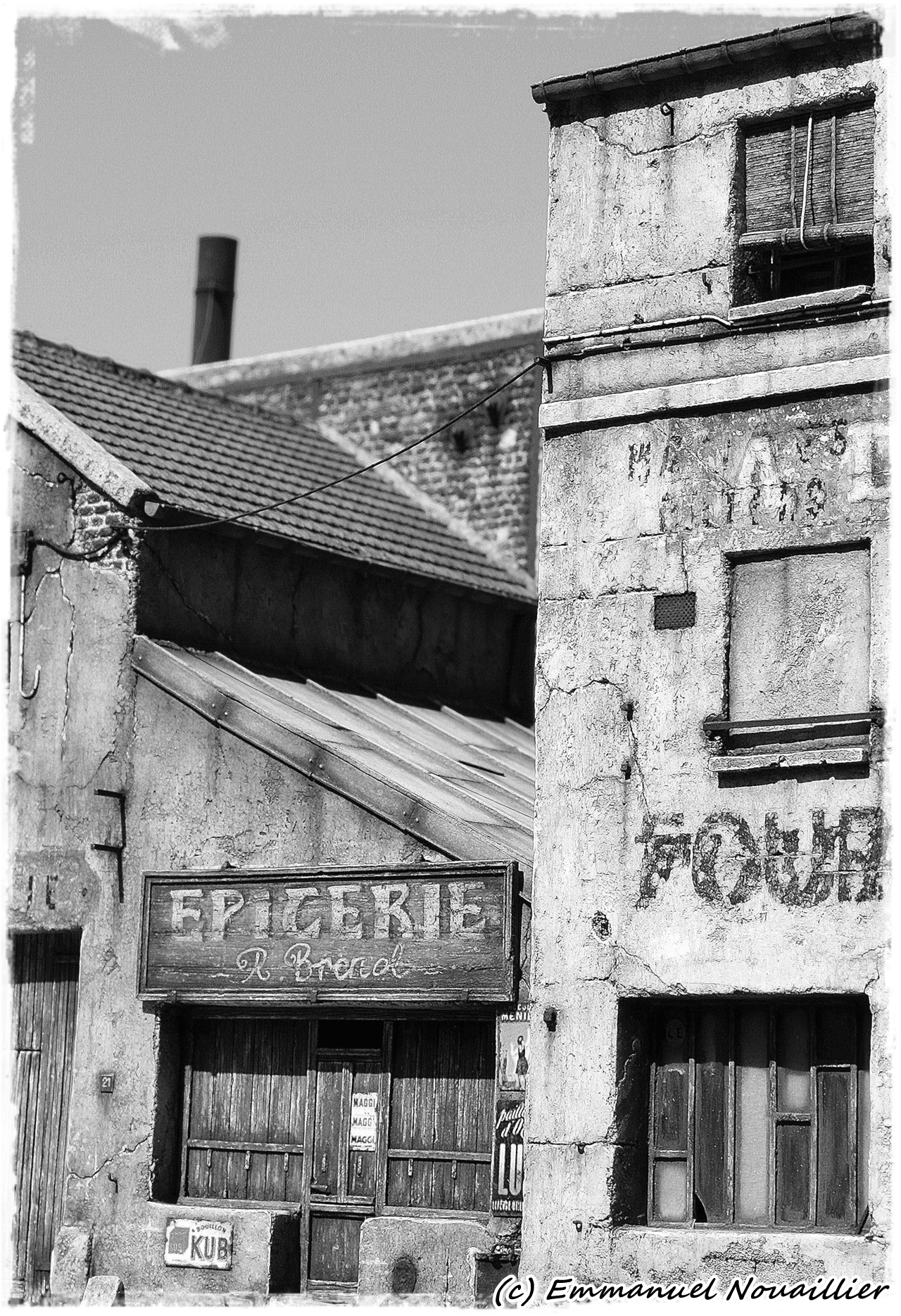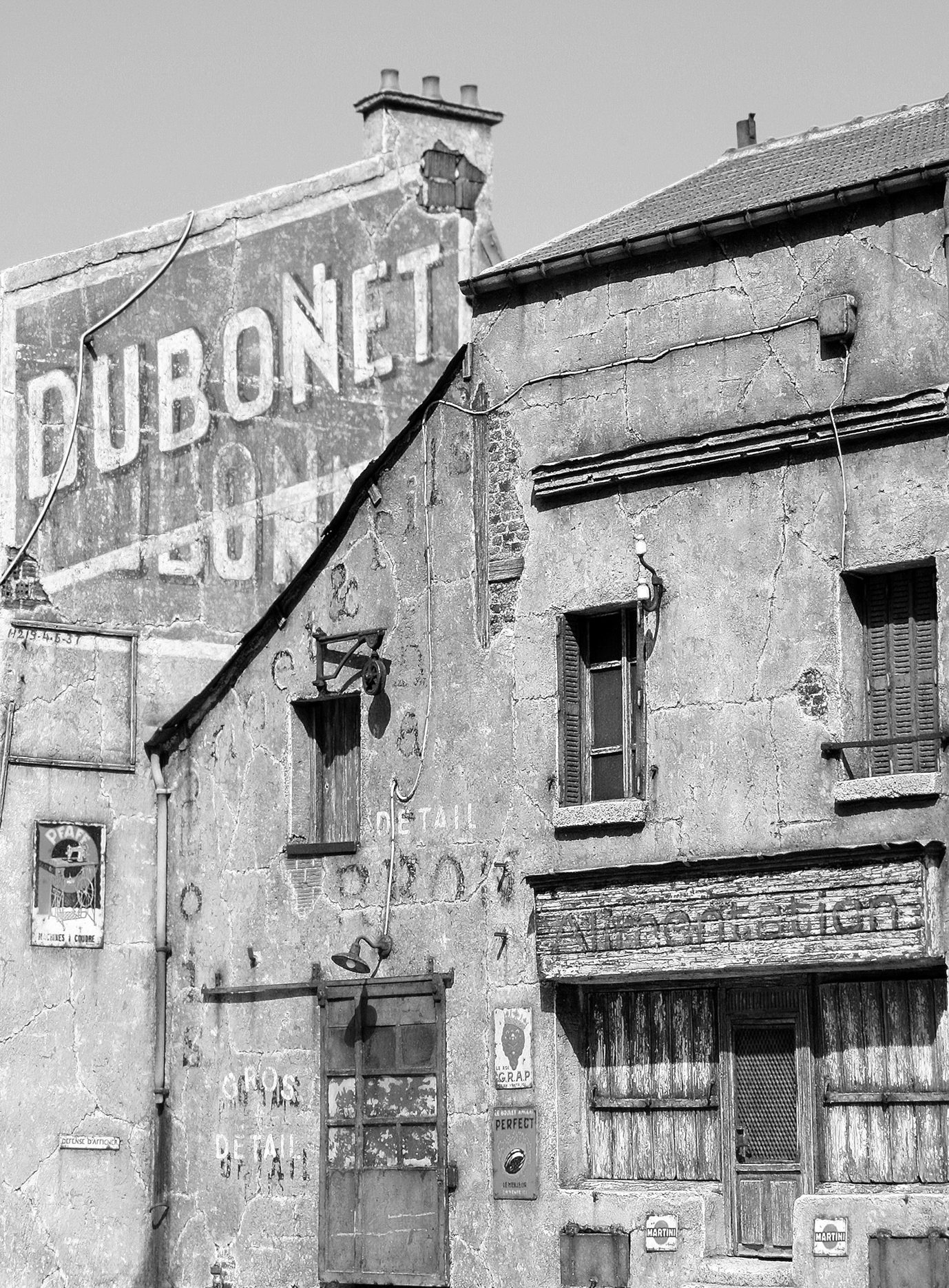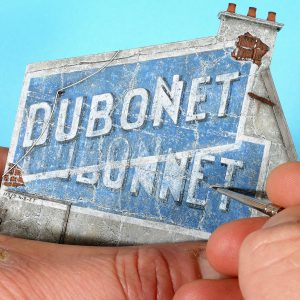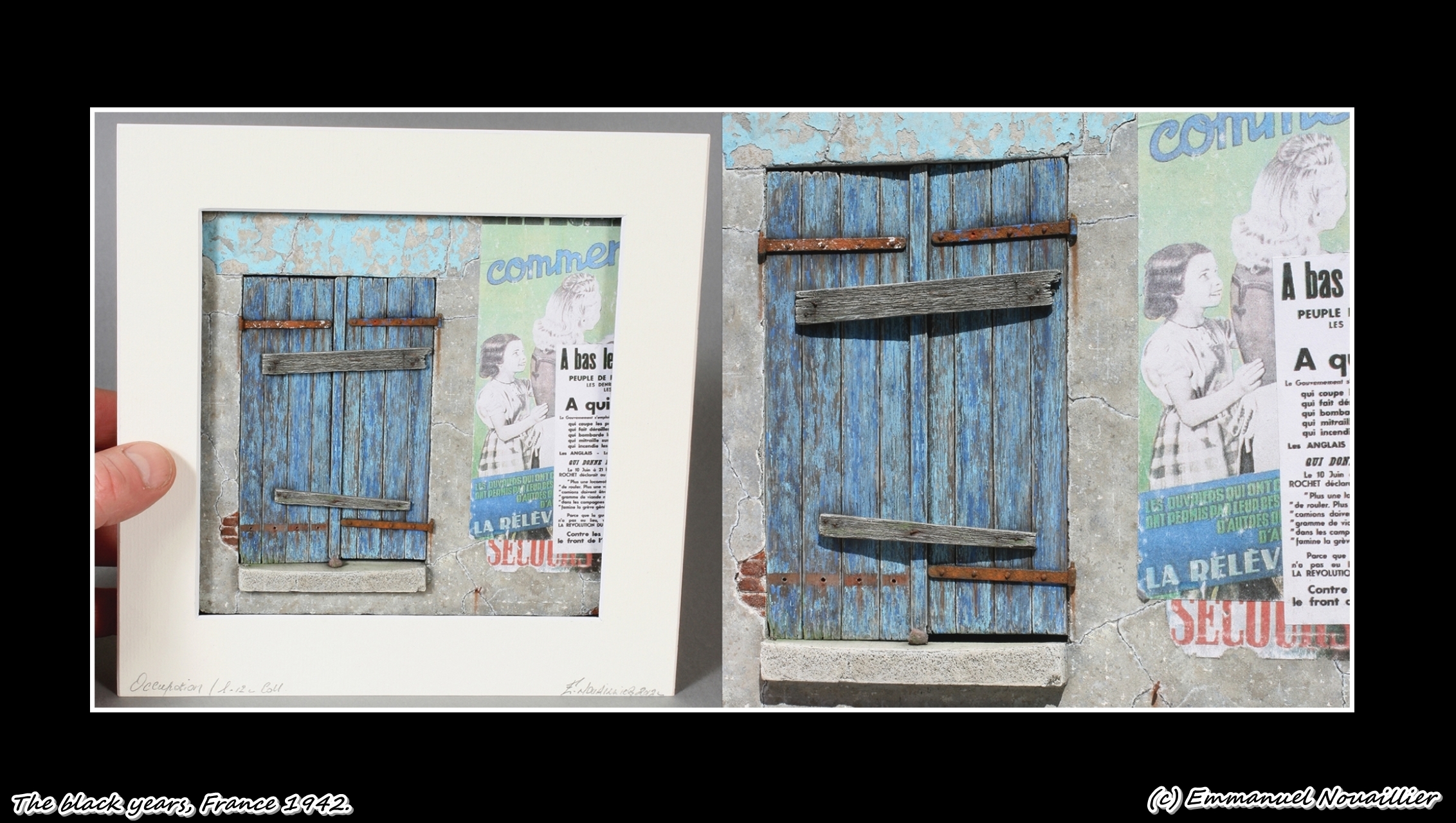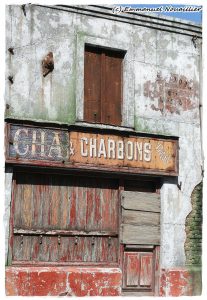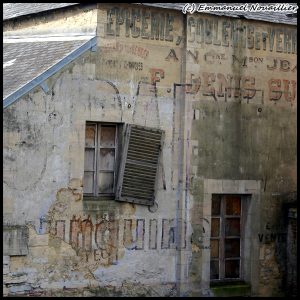Miniatures by Emmanuel Nouaillier
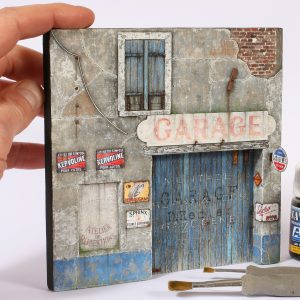 How did you first get started making miniatures?
How did you first get started making miniatures?
I remember building kits of airplanes when I was around 10 years old. Then I moved to really historical themes with armored vehicles and figures.
At this period in time, I started to learn methods of aging by master modelers and, at the same time, my focus slowly switched to what I call the urban landscape from old times (1940s to early 70s), as well as traces that remain nowadays. I thus oscillate between nostalgia and sensitivity regarding to an era which is no more.
How would you describe your aesthetic?
I think the term hyperrealism or utmost realism would perfectly fit. I have an obsession with that, in scale, regarding overlooked structures of an urban landscape. Specifically I mean those “traces” from pastimes: abandoned vintage storefronts, disused workshops, old sheds and other antique wall-ads. I really don’t know where it comes from, but I’m a passionate hunter for this kind of thing, photographing as many things as I can when I unearth one. I greatly enjoy incorporating strong effects of aging more particularly, not as they should appear on the model in scale, but having always in mind the way I should let them appear “through” the pictures. For me, this is the ultimate and last step of my work: macro photos with natural lighting and side angles as if you are in front of a real building. I should say I’m half miniaturist and half photographer, perhaps the best way to qualify me is a “painter” in 3D. Yes, I like to “compose” pictures with my miniature sculptures.
Well, first of all, I never copy a precise structure in scale. I think it’s perhaps interesting to duplicate the front of a building closely, but this doesn’t leave you any possibilities to improve details, erase others or to bring much more weight to a peculiar effect which doesn’t appear in the real situation. Of course, I took my inspiration from original situations, but I’m used to only “extracting” what seems interesting to my point of view (should that be a typical peeled door, worn shutters, a part of wall, tiny details, and so on… ) to completely reimagine a façade, a building or a street scene. My philosophy is to make walls or structures as they should appear or could have appeared “somewhere” or in a more precise area, but in fact nowhere else than in my mind and imagination.
What materials do you incorporate into your structures?
I mainly create them from foam board and plastic card of different thicknesses, depending on the scales I work in. I also use water-based coating and very fine small commercial items to mimic tiny details such as nuts, bolts, and so on. For my paintings and aging processes, I employ enamel paints as well as acrylics, and always involve experimental advanced methods of weathering with new products, or at least to improve some “old” techniques in order to perfect the effects.
Do you remember the very first miniature you created?
If you’re talking about a real piece of art — yes, of course. This was a showcase box depicting a part of an old industrial siding in the Parisian suburbs of the 1960s. It was a combination to perfect the old techniques I used at scale modeling when younger and an experiment at hand-making buildings in the same time. I sold it with another piece in the same style to the Musée Miniature et Cinéma located in Lyon, France.
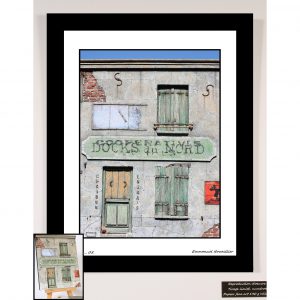 What is your favorite miniature to make?
What is your favorite miniature to make?
Frankly speaking, I should say just a strongly aged patched door or a slice of wall of the same. These offer so many effects of aging, contrasts and variations of textures that I should spend hours to work at perfecting the way they should appear at end. That’s just as simple as that!
What advice would you give to new artists?
Patience to never let up.
Always think once the work seems to be finished, it should have been better, and will be better next time. You must always have a very critical sense towards your own work once it has come to its end so that you can progress. Now if you really turn your miniature work into art and want to succeed, you know years and years of practice will not be enough. You have to “feel” the things, you have to be completely impregnated by the things you want to mimic in scale, and let your emotions appear through the work you present.
I’ve many in mind, but I should say first of all Dan Ohlmann (France), Randy Hage (New York, USA) and can’t forget Ichiyoh Haga (Japan).
Not strictly speaking of miniatures, there’s an artist who, in my opinion, is the best in the category of working effects in scale. It’s mind-blowing. Check him out: Chuck C. Doan (California, USA).
Favorite sign or sign company?
There are too many I enjoy so I can’t pick only one! The palimpsest (various layers of old ads) is certainly the most exciting sign in my opinion. It often looks like accidental art, offering sparkling graphic pictures with bold colors and typeface from a bygone age.
Favorite building or façade in France?
As in my previous response, there are too many! However, I would choose a scenario that gathers a lot of elements that I like to work within, and which aspects really remind us of an urban landscape from a bygone era… frozen in its state of deliquescence.
Yes of course. You know I spend all day long at my display, and I’m used to working on many things at the same time.
What’s planned for the next few months is the end of my series “Closed,” featuring 10 framed French vintage storefronts in a strongly decayed style.
In the next year or so, I’ve also planned to complete a first series of in-boxed street scenes focusing on the urban landscape from a bygone age, in a very small scale.
Besides these rather ”classic” framed boxes, I continue my experiments at re-using small, old, metallic, wooden or cardboard vintage boxes as casings for some “slices” of walls in 1/43 and 1/35 scales. I’m actually thinking about new concepts, but can’t reveal anything at the moment. My aim is to be able to organize my own exhibitions at the end, mixing 3D artworks and art prints from them.
Emmanuel Nouaillier is a self taught miniaturist and photographer. He’s 52 years old and lives in a 19th century house located on the Normandy coast of France. To see more of his miniatures and miniature buildings, check out his blog and follow along on Instagram. Stay tuned for info about his forthcoming website! 